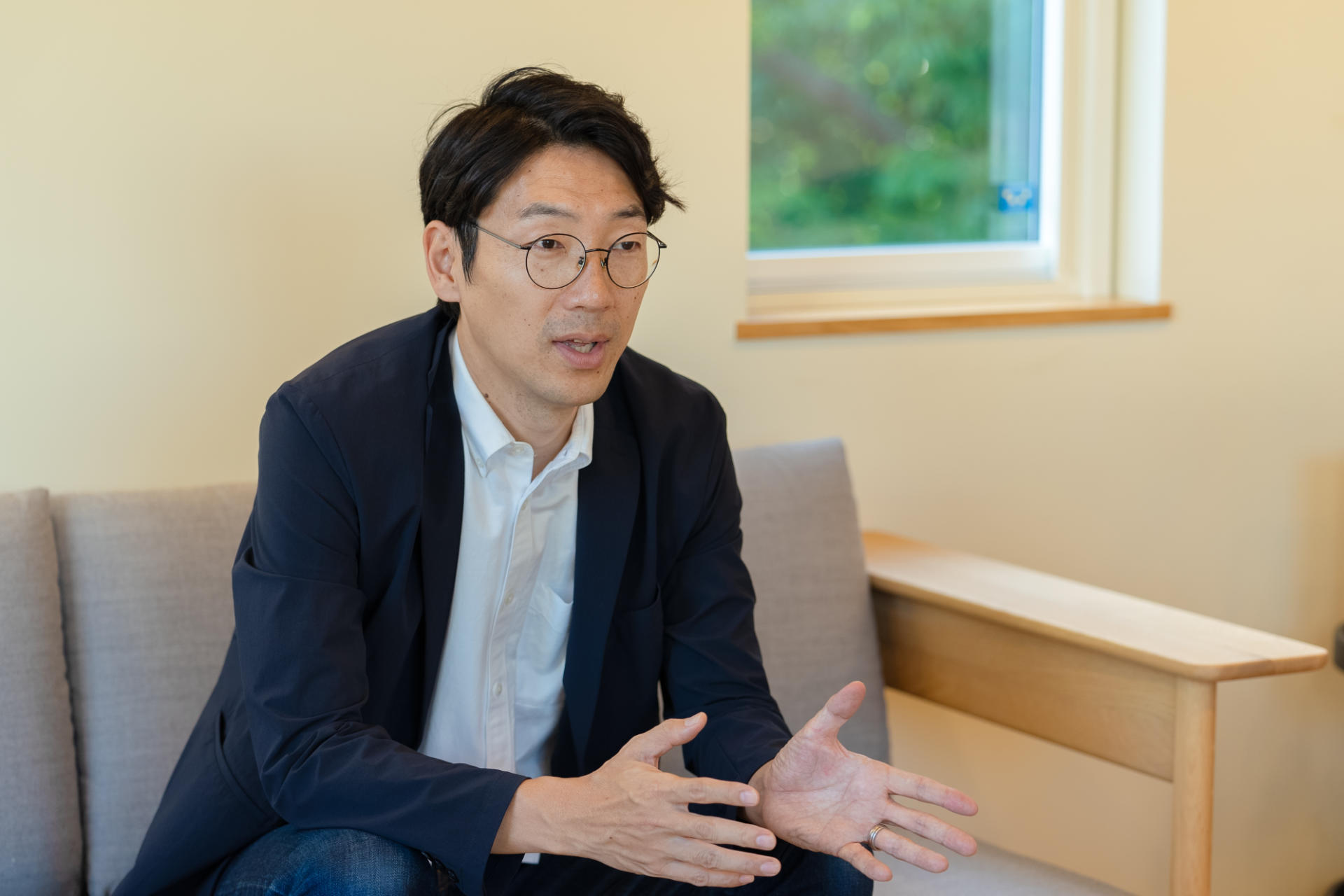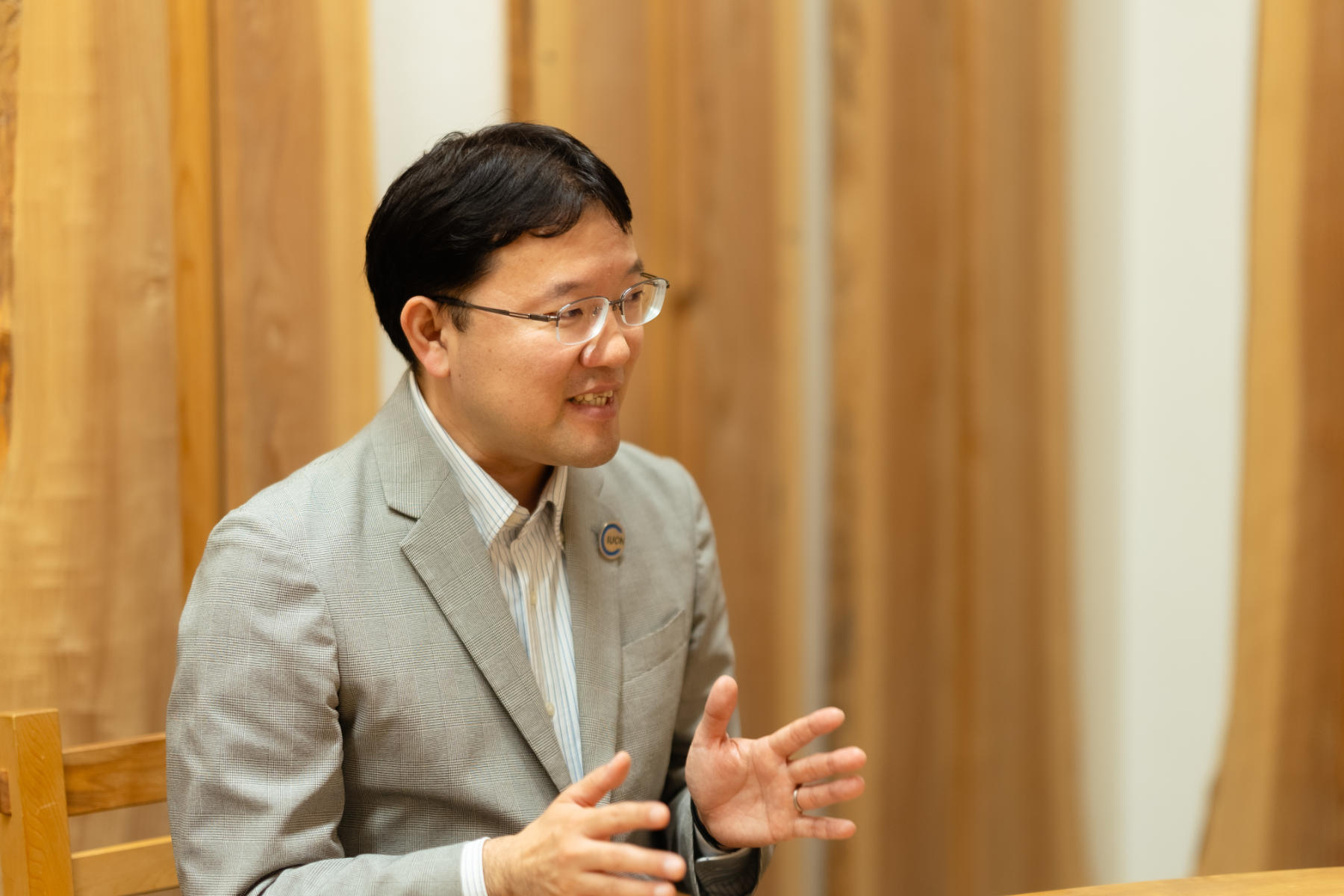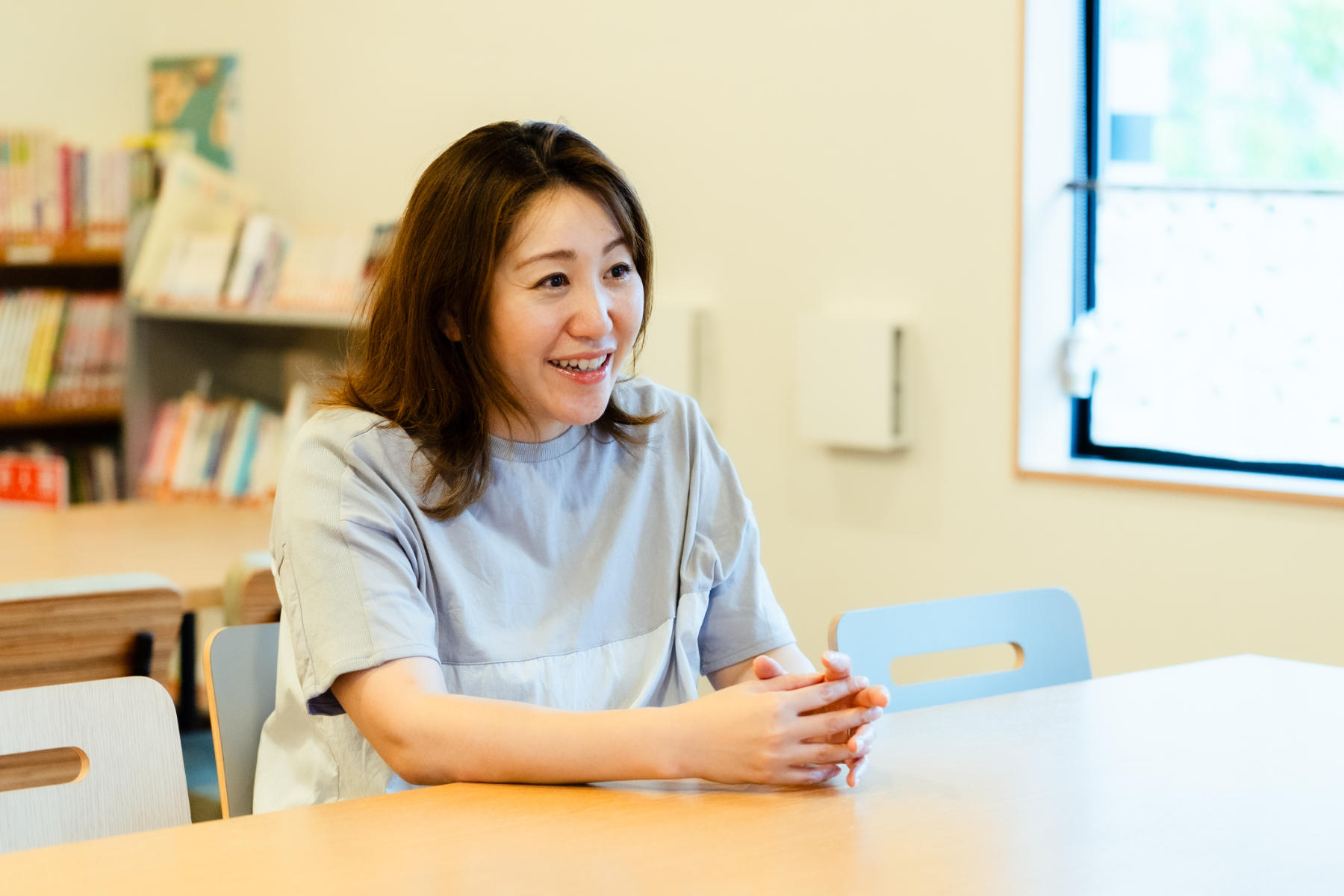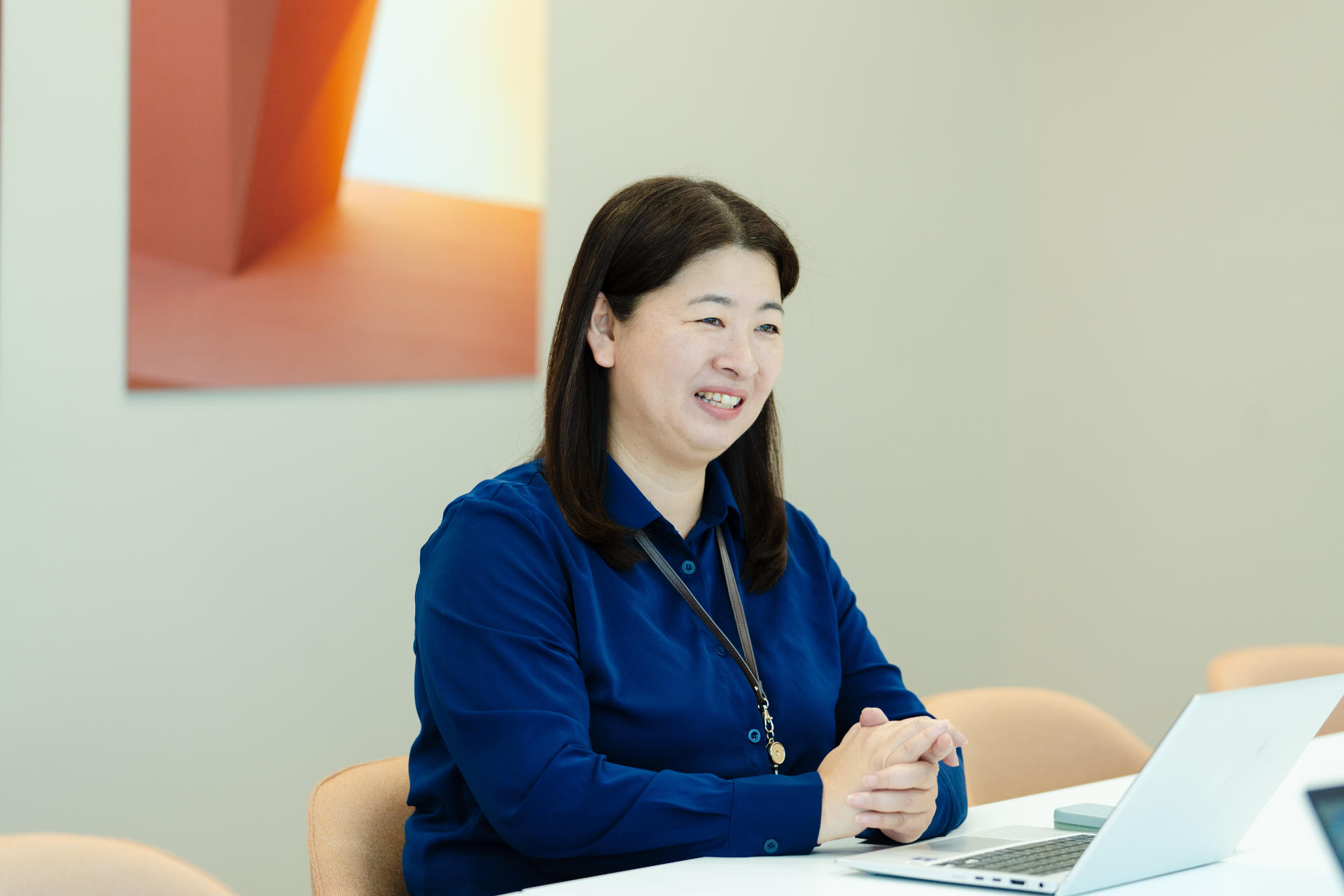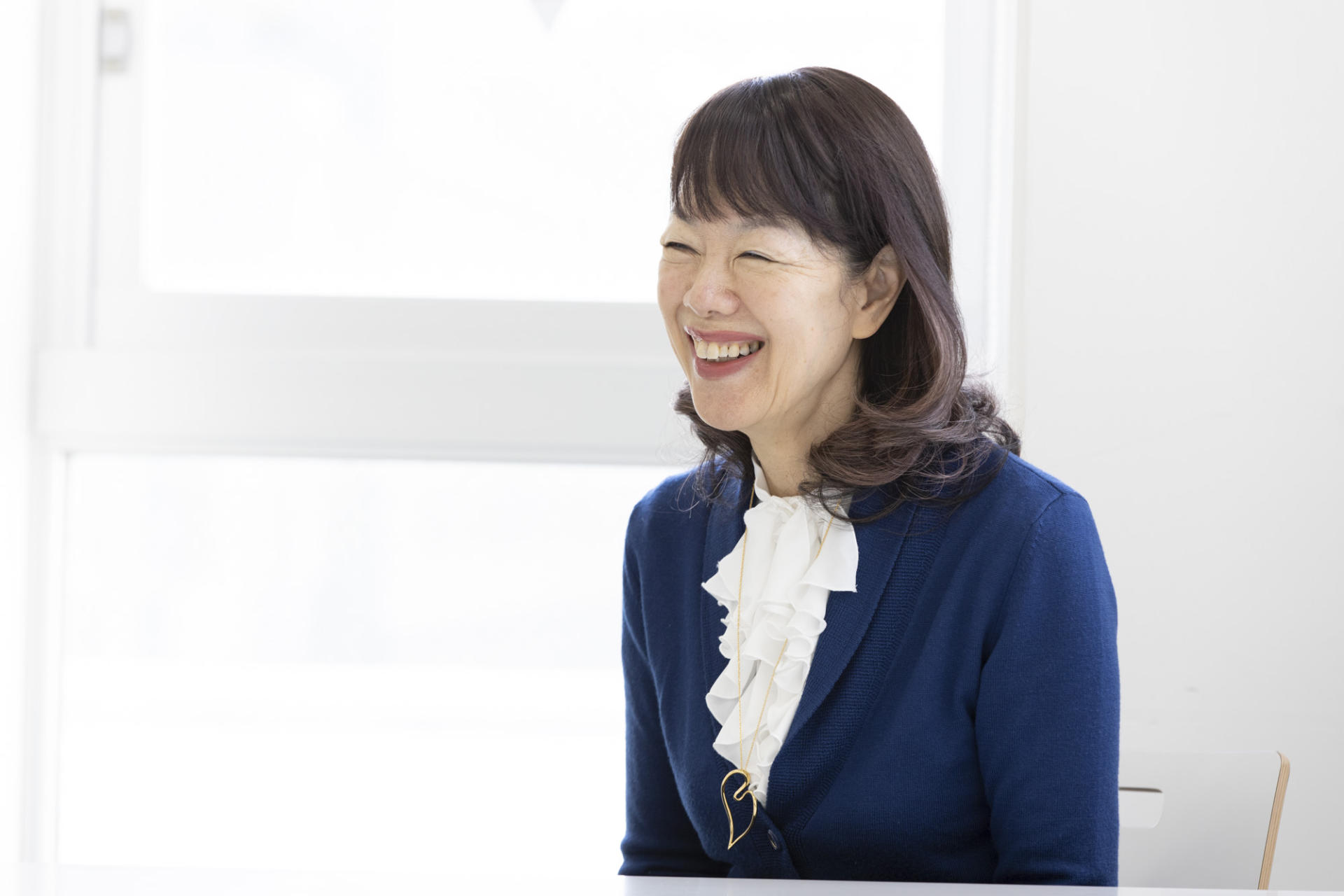CASE 04
Shanti Volunteer Association
(October 2017 –)
How should we talk about our works that involve a wide variety of countries, businesses and people? We noticed that internal communication is crucial for that.
Shanti Volunteer Association (hereinafter, Shanti) is an NGO which has provided educational support and emergency rescue operations for children throughout Asia for over 35 years since their founding in 1981. They are an NGO with large scale projects and a large number of workers, and as they support various countries and projects, they say that as an organization they had issues with strategic public relations. We interviewed Ms. Akiko Suzuki, chief of Shanti’s PR department.
“We couldn’t prioritize information and were feeling the limit for making PR strategy by ourselves.”
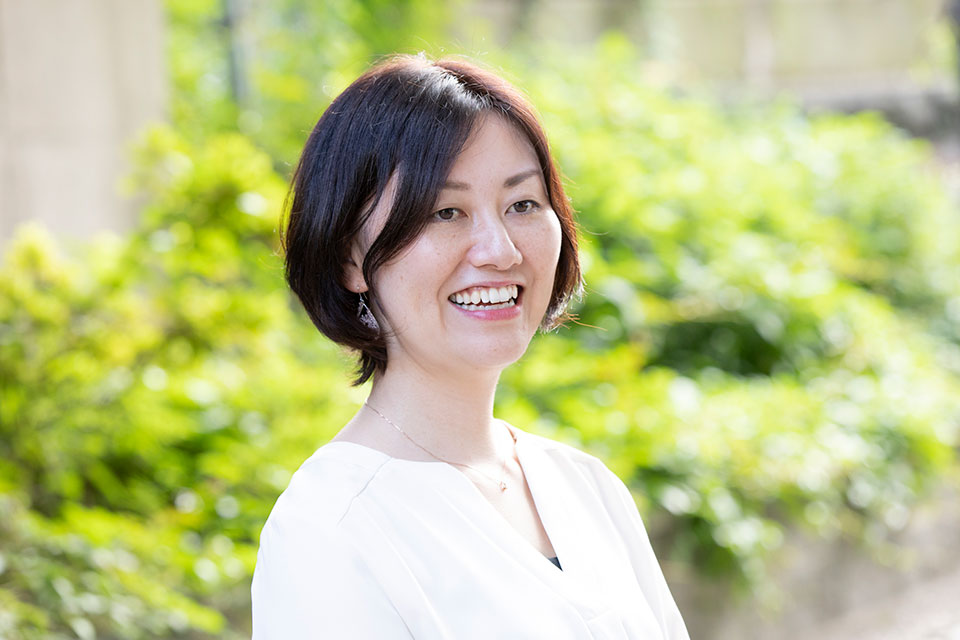
Ms. Akiko Suzuki, chief of PR department in Shanti Volunteer Association
Takahashi of Hitoshizuku (hereinafter, Takahashi):
When you consulted us, what kind of thing did you feel was challenging?
Ms. Suzuki, PR person of Shanti (hereinafter, Ms. Suzuki):
Since I became chief of PR department in November 2015, I’d been feeling I wasn’t seeing a message as Shanti or what we put in the center of Shanti. I was feeling frustrated by the vague idea that we had to strengthen our public relations. People around me also told me to make a strategy soon, and even though making PR strategies was recognized as an urgent task within the organization, I’d been struggling how to do it. We had tried several ways but felt limited as to what we could do by ourselves. Around then, we were introduced to Hitoshizuku.
Takahashi:
I see. You mentioned “feeling limited as to making strategies within the organization”, but at what point did you feel that?
Ms. Suzuki:
Shanti is involved in many countries and many projects, and we had sent out information of those in the same manner. As a result, it became unclear what Shanti was doing. As I’m also a person inside the organization, when I try to prioritize things, I feel everything is important. There is a limit on prioritizing or deciding the principles within the organization, and we felt the need for standards with an objective viewpoint from outside of the organization.
Other than that, it was difficult to answer to the question of how we should make our PR strategy from inside the organization. We had an opportunity to exchange information with other NGOs about public relations, and they had similar issues. We can learn together about how to publicize, but we can’t share the process of making our own core of PR, can we?
So, I’d been thinking that we need someone on the outside who runs alongside us, and I thought we could meet exactly who we needed at just the perfect time when I met Hitoshizuku.
Takahashi:
After we got involved, are the issues you’d been struggling moving towards a solution?
Ms. Suzuki:
When we first figured out what kind of PR we should do and what the issues in our PR are, you pointed out the key of the issues we had as an organization. I think as issues were clarified regarding sense of purpose, branding, the system of data collection, internal communication etc., executives and other departments also began to understand those issues, which led to fostering our awareness that strengthening PR is a goal for the whole organization.
The work of PR might be these continuous struggles

Asuka Takahashi of Hitoshizuku, who works with Shanti
Takahashi:
We’ve worked together since 2017, but what kind of things do you think we haven’t done quite yet? Personally, I have many things that I feel I haven’t done enough …
Ms. Suzuki:
Well, we also have many things that we think we need to do more. Although we properly recognized issues and started to work on them, we feel that those issues themselves are quite big and deep. We were ready for that to some extent, but it was more than that.
Especially, the internal decision-making process is a big issue. It is difficult to prioritize the information we have at the moment. It is a constant struggle.
Takahashi:
I might not be supposed to say this, but I do struggle, too. In the world that keeps changing every day, I waver over such things as whether the decision I made the day before was right – these days I feel like the work of PR is a constant struggle.
Ms. Suzuki:
You feel like that, too?! Especially organizations like ours, we don’t have the right answer and tend to struggle over things that don’t have a wrong answer either. Even when we approach things from a different angle. Endless possible expressions and ways to show things appear. Then we struggle to figure out what might work, but we don’t always get an answer for that.
I have realized from my efforts the difficulty of solving the issues of making a PR strategy or a principle of publicizing what we say. However, I’m very grateful that we can proceed that with sharing what we struggle by having discussions with you, which I think is worth doing.
How we give a shape to the thoughts of stakeholders – Internal communication is the foundation of PR.

Ms. Suzuki:
I think every organization is the same, but I’m always thinking about how I should give shape to everybody’s thoughts. Of course there is the current staff at Shanti, but also those who have supported our work, those who worked together before, experts who work together as partners – we have so many stakeholders. I want to include the thoughts of those people into the principle of our PR or into our messaging. But it would lack coherence if we try to put a lot of things, or our message would lack of focus if we send out thoughts of various people at various times.
I feel that what is difficult is to have communication where we let them know our message as an organization and keep everybody’s feelings on the same page. PR is a department where we create outward messages, but what lies in the foundation of everything is internal communication, and we can’t create outward messaging without it.
Each one of the people who are involved with Shanti care about different things and puts thoughts on different parts, so it’s difficult to feature one of them. It’s necessary to shape otherwise shapeless values, which is a struggle.
Takahashi:
I think you’ve really been addressing a difficult issue. Are we supporting you well enough through that?
Ms. Suzuki:
First of all, I really thank you for patiently working with us! (Laughs) Although I think I can say I’ve involved you into my daily struggles, I personally feel very reassured. Starting from branding, we’ve done things together, such as events, and I strongly feel that we are moving forward together. I didn’t expect that at the beginning.
What we struggle with varies greatly and I am grateful that you are so accepting of that. As NGOs usually have a few numbers of people doing their PR, we cover a wide area. I think there are many people or companies who say they can handle only this area, but we handle things comprehensively with very limited number of people, so it is already impossible to cut a part of it and ask for help only for that. You understand that well, see the large picture and generously provide your experiences and networks, for which we are so grateful.
Sometimes I think there might be more things that we can do for each other as you’re working with us side by side. We’d like you to tell us what you think more, and we strongly feel that we’d like you to know us more as well. We’re looking forward to keeping working with you in the future.
Photograph : Chisato Hikita
Editing : Takako Chiba
RECENT WORKS
| Name | Hitoshizuku Inc. |
| Address | 33 Nihonodori Naka-ku Yokohama Kanagawa 231-0021 JAPAN |
| Branch | Hamacho Odawara Kanagawa 250-0004 JAPAN |
| Phone | 81 045 900 8611 |
| info@hitoshizuku.co.jp |
| President | Hiroshi Kokubo |
| Established | March 2016 |
| Capital | 3,000,000yen |
| Business | Advertising & Public Relations Agency Planning & Produciton of Social Good Projects |
| Lawyer | Junna Tei / Yokohama First Law Office |
| Tax Advisor | Satoru Motokoide / Uniques Money Advisory |
| Labor and Social Security Attorney Office Work Innovation | |

